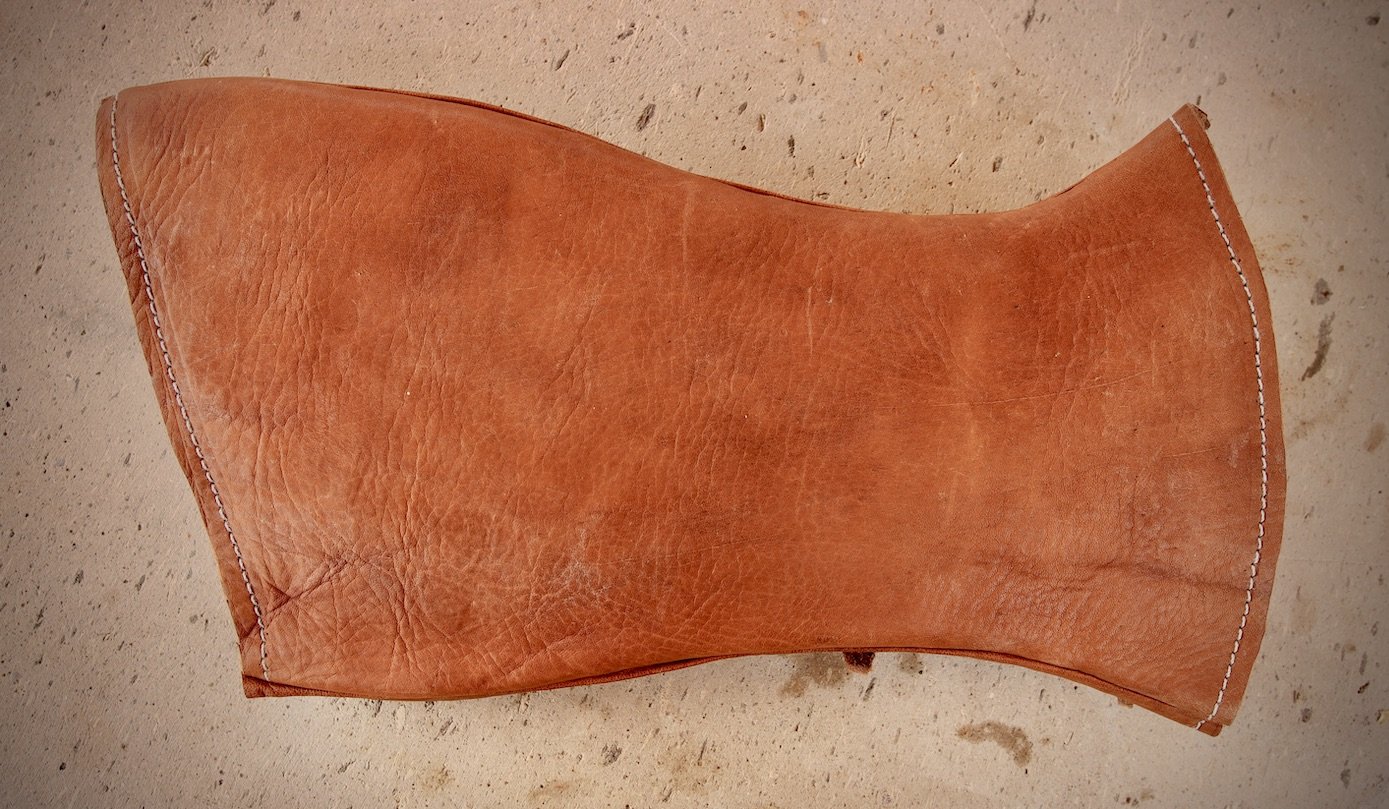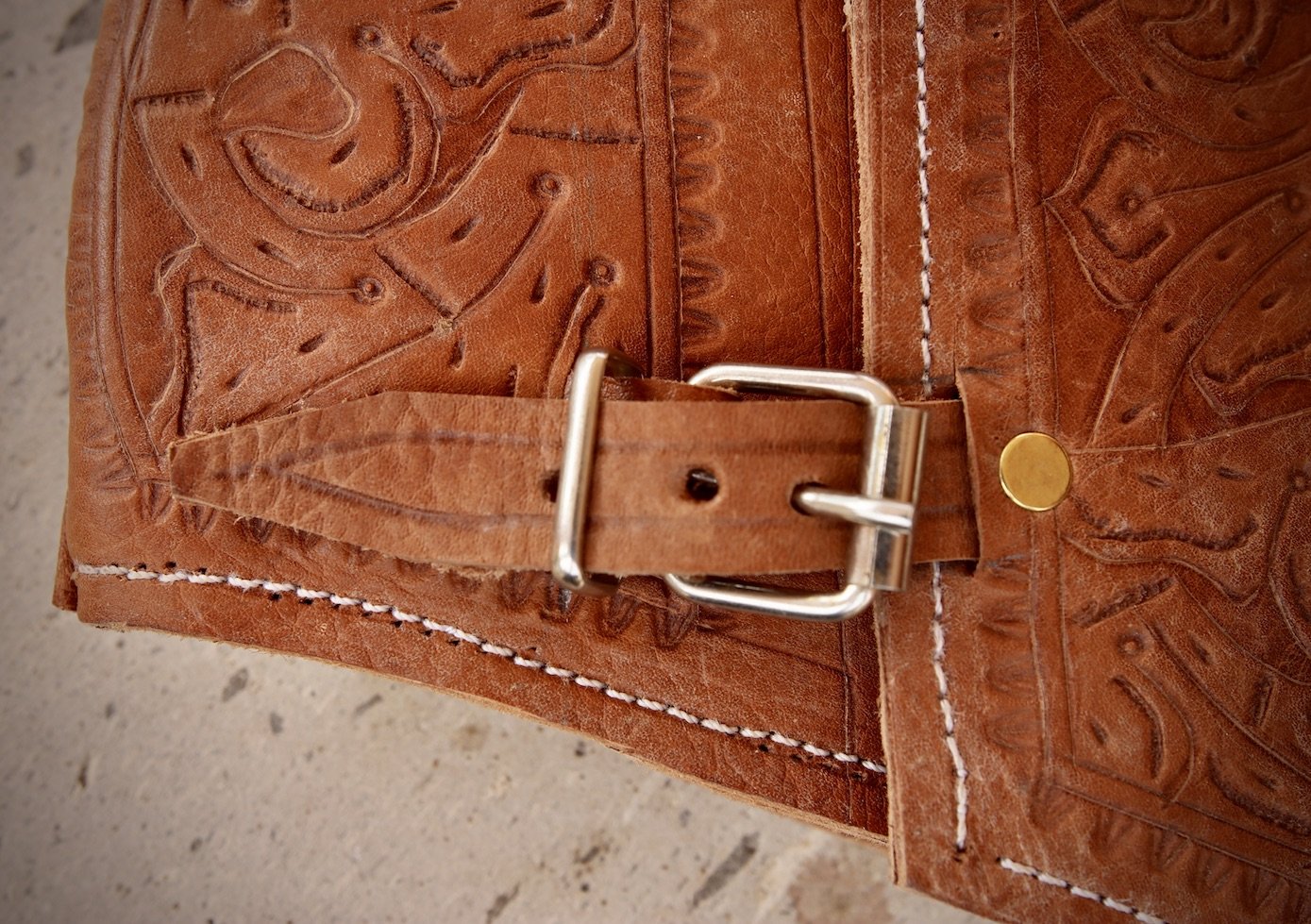Polainas are leather-crafted gaiters that Baja vaqueros have worn for centuries to protect their lower legs from cactus spines, desert thorns and rattlesnakes. This photo, taken by Balazs Gardi and featured in the National Geographic article, “Meeting the Cowboys of Baja California, Mexico” (20 Dec 2021) depicts polainas worn by Ignacio 'Nacho' Arce Arce at Rancho Aguajito de la Tia Adelaida in Santa Martha Valley, Baja California Sur, Mexico.
Anyone who has hiked or ridden mules on the wild side of Loreto knows that it can be a prickly experience. With plant life such as cacti, cat claw, devil’s claw, and other thorny thickets, as well as the occasional rattlesnake, your legs are constantly exposed to spines, thorns, sharp spikes and other piercing things that have no trouble penetrating right through your pant legs and into your skin.
Polainas
For centuries, Baja vaqueros (cowboys) have hand-crafted and worn polainas, which is the Spanish term for leather gaiters, to protect their legs from below the knee to the ankle, and shield them from injury.
On today’s Baja ranches, where this leather-crafting tradition continues, visitors will typically see a shaded leatherwork bench strewn with hand-tooled items in various stages of completion: teguas (riding shoes), soled with tire rubber; wallets, belts, beautiful saddles adorned with equine motifs; and polainas (gaiters) — essential protection for desert travel.
Beautifully hand-crafted from tanned mule deer hide and softened by Palo Blanco tree branches and limestone, these polainas represent the centuries-old, traditional art of leather-crafting on the Baja.
La Recua
In the film, La Recua – The Mule Pack Train (2023), Producer and Director Trudi Angell tells the story of an epic adventure where a handful of tough desert-raised vaqueros, adorned in their leather-crafted clothing, re-create the journey of their ancestors to ride a dozen donkeys across 200 miles of dry, thorny, Baja desert. The leader of this journey is Dario Higuera, a 70 year old cowboy of the Baja, who builds a recua (mule pack train) to transport early 20th century goods (dates, oranges, sugarcane candy, aged goat cheese, and gallons of famous San Jose wine) down the old trails from the village of Comondú to the city of La Paz, just as his ancestors, indigenous vaqueros, missionaries, and cargo-runners did in the past.
Soldiers of Leather
According to the National Geographic article, “Meeting the Cowboys of Baja California,” the traditional leather-crafting of the vaqueros has “changed little since their Spanish ancestors arrived on the Baja peninsula back in the 18th century. Hired by Jesuit missionaries who were granted control of the frontier by the monarchy, the vaqueros’ forebears — known as ‘soldiers of leather’ for the mule deer hide jerkins they wore — lived off the land and were tasked with guarding mission outposts throughout Baja California. When the Jesuits were expelled in 1767, vast tracts of lands were granted to the cowboys. They raised cattle and goats and lived off the land, largely insulated from political upheavals elsewhere in Mexico and the advance of technology. Wresting their living from the hard terrain, beyond government control, they evolved an extraordinary level of self-sufficiency, developing tanning, rope-making and cooking traditions that blend art and necessity.”
Preserving Baja Culture
At Keep Loreto Magical’s 2023 Noche Magica event, we were very grateful that the internationally renown leather-crafters, Dario Higuera and Tete Arce (Yes, it’s the same men featured in the La Recua movie and National Geographic article!), donated some of their handmade polainas to our auction, as shown in the photos below. It is an honor for all of us at KLM to work with the rancheros and vaqueros of Baja California to help preserve their culture, environment, and incredible knowledge of both desert life and leather-crafting.




